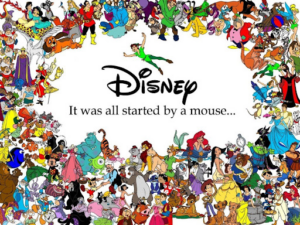Film credits serve the important purpose of acknowledging the hard work and skills of both on-screen and behind-the-scenes personnel and consists of many specialists who perform a wide range of tasks to create movies.
Therefore, if you’re working on a film project, you should also remember to give credit where credit is due. Besides listing the names of the specialists who played a part in making your movie happen, you also need to follow some best practices when you’re writing your film credits, such as using the right format and listing the names in the correct order.
The Evolution of Film Credits
In the early years of the film industry, movies would only display titles at the beginning. As people started going to the movies regularly, they started to recognize some of the actors in the films they watched and became fans of those artists. Soon, movies would start with a short list of actors’ names, which is now known as the opening credits.
It wasn’t until the 1970s that end credits became a common practice. This resulted from the newly established auteur theory, which is the belief that a director is the primary creative voice behind a movie.
End credits became a standard when the film industry started adopting the digital format. In the past, when films were shot on celluloid, it was relatively expensive to include credits in a movie. Many filmmakers felt that it wasn’t worthwhile to spend extra money on a list of names that moviegoers might not stick around to see. In the age of digital filmmaking, the expense has become less of a concern, and credits may sometimes reach lengths of more than 10 minutes.
The Importance of Film Credits
In the era without film credits, many people were unable to identify their favorite actors. They could probably recognize the faces of some actors, but they didn’t know their names. After film credits started to appear in movies, fans were able to put names to those faces. Consequently, actors became more famous, which made it possible for other film producers to contact them for new productions.
Actors aren’t the only ones who participate in a film. Many other people who contribute to a movie work behind the scenes, and they deserve recognition for their work as well. The purpose of end credits is to show appreciation to the members of the crew who helped create the film.
The length of the credits varies depending on the size of the production team. Nonetheless, even with credits that last 15 minutes or more, filmmakers may still leave out hundreds of names.
Who Decides Which Names Will Appear in Film Credits?
Film unions decide who will be listed in the opening credits. Examples of these unions include Screen Actors Guild – American Federation of Television and Radio Artists, Writers Guild of America, and Producers Guild of America. As for the end credits, the production company or producer makes most of the decisions in support of the unions. The producer typically focuses on giving credit to the people who are most involved in the filmmaking process. The involvement may be in the form of time devoted, amount of work done, or money invested.
Sometimes, actors may state in their contracts where and how they want their names to be displayed in the film credits. They do this to avoid disputes over credits, which often happens. Many people in the film industry don’t get credit for their work, but they may have an “Uncredited” role included in their IMDb page.
Who Appears in the Opening Credits and In What Order?
Nowadays, most film credits are displayed at the end of a movie, but many films still have opening credits. Opening credits typically include the following items:
- Company logo: A film opens with the logo of the studio or distribution company, usually before the appearance of any other image.
- Recognizable names: If the director of the movie is highly acclaimed, such as Steven Spielberg, the next credit may be “A Steven Spielberg Film.” Otherwise, the names of one to three of the main actors will be next in line.
- Supporting cast members: After the title is displayed, the names of the supporting cast members who play significant roles in the movie will appear.
- Important crew members: Next come the names of important crew members. The order may vary, but these credits usually include the casting director, costume designer, music composer, associate producers, editor, production designer, visual effects supervisor, art director, photography director, executive producer, producer, and writer. Credits for crew members start with the least important people and end with the most important. If the name of the director doesn’t appear after the company logo, it’ll be listed last among the crew members.
Who Is Listed in the End Credits and In What Order?
Typically, end credits are longer than opening credits. The names in the end credits appear in the following order:
- Director: The end credits start with the director’s name for a perfect bookend.
- Writer: If the writer is also the director, then the credit will include the phrase “Written and Directed by” to avoid redundancy.
- Producer and executive producer: The producer’s name will come next, followed by the executive producer. These credits are often shown in isolation on the screen, appearing one after another.
- Actors: The names of actors may be shown individually or as part of the scrolling credits. They may be listed in alphabetical order or according to appearance or popularity.
- Crew members: The heads of department are typically named before the crew members who work under them.
- Others: The end credits may also include the music used in the movie, production sponsors, special thanks, and legal disclaimers.
How Do Producers Get Movie Viewers to Sit Through the End Credits?
Opening credits are often easier to watch than end credits because they make people anticipate the movie. Moviegoers seldom stick around to view the end credits because they’ve already finished watching the movie. Nevertheless, film producers have found creative ways to get fans to sit through the end credits. Some of these techniques include adding fun animation, playing interesting soundtracks, and using out-plays. Out-plays can be anything from humorous party scenes to scenes from a follow-up movie.
Categorize Your Movie Credits Early
Writing film credits is similar to managing a file cabinet. You may have all the information available, but you’ll have a hard time pulling names unless you properly organize them. Whether you’re using sticky notes or a film credit template, make sure you categorize all the names into lists that you can easily access at a glance. You can label the lists as “Talent,” “Above the Line,” “Executive Producers,” or whatever you like, but you have to keep your extensive list of names organized.
How Do You Decide the Order of Your Film Credits?
If you’re unsure how to list your film credits in the right order, you can make structuring easier by using an online film credit template. This type of template is usually free to download, and it comes in many different forms, from feature film credit template to short film credit template. Art of the Title is also a great resource for viewing popular title sequences.
Creating Film Credits Is an Art Form
Similar to other forms of art, writing film credits is something you can learn by copying from the best. Find a good recent movie that belongs to the same genre as yours and look at how its end credits are done. By using the movie as a guide, you can be sure that your film credits will be suitable for the type of movie you’re making.
If you want to learn about film credits and other aspects of filmmaking, consider enrolling in the Nashville Film Institute’s Cinema Production Diploma course. Contact us today to find out about our film programs.















